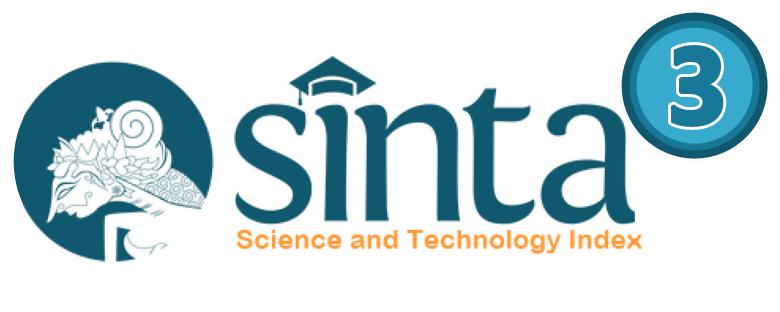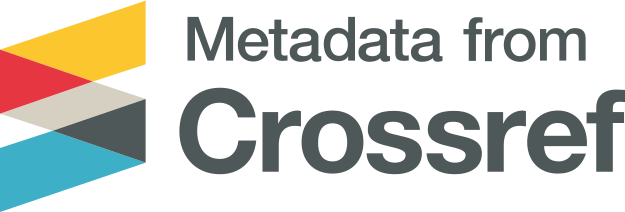Determinan Penerimaan Pajak Penghasilan Badan: Studi Negara Amerika Latin
Abstract views: 399 | Download Pdf downloads: 394
Abstract
Latin America as a region with great natural resource potential, still has a narrow tax base due to problems of law enforcement, tax incentives and tariff reductions. The corporate income tax that significantly increases revenue in the Latin America/LAC in 2019 around 3.7 percent of GDP is interesting to study. Therefore, this research was conducted to examine the determinants of corporate income tax revenue in the Latin American. This study uses panel data on 12 countries in Latin America in 2008-2018. The statistical method used is a quantitative method with multiple linear regression. Based on testing, the panel-corrected standard error estimation model is the best model. The results show that all independent variables simultaneously affect tax revenue. The variables of economic growth, FDI inflows, land area, and trade openness partially have significant positive effect on corporate income tax revenues. Meanwhile, the tax attractiveness index variable has significant negative effect on corporate income tax revenue in Latin American. Based on the results of this study, it is necessary to review the international trade policies in the Latin American because trade openness still tends to have no effect and even weaken the positive relationship between FDI inflows and corporate income tax revenues.
References
Acosta-Ormaechea, S., Pienknagura, S., & Pizzinelli, C. (2022). Tax Policy for Inclusive Growth in Latin America and the Caribbean (WP/22/8).
Alesina, A., Spolaore, E., & Wacziarg, R. (2005). Trade, Growth and the Size of Countries. In P. Aghion & S. N. Durlauf (Eds.), Handbook of Economic Growth (Vol. 1, pp. 1499–1542). Elsevier. https://doi.org/https://doi.org/10.1016/S1574-0684(05)01023-3
Alouini, O., & Hubert, P. (2020). Country size, economic performance and volatility. Revue de l’OFCE, 164(4), 139–163. https://doi.org/10.3917/reof.164.0139
Baltagi, B. H. (2005). Econometric Analysis of Panel Data (Third edition).
Bellak, C., & Leibrecht, M. (2009). Do low corporate income tax rates attract FDI? – Evidence from Central- and East European countries. Applied Economics, 41(21), 2691–2703. https://doi.org/10.1080/00036840701320217
Bornhorst, F., Gupta, S., & Thornton, J. (2009). Natural resource endowments and the domestic revenue effort. European Journal of Political Economy, 25(4), 439–446. https://doi.org/https://doi.org/10.1016/j.ejpoleco.2009.01.003
Brun, J.-F., & Kimm Gnangnon, S. (2017). Does Trade Openness contribute to driving Financing Flows for Development? (ERSD-2017-06).
Buckley, P. J., & Casson, M. (2003). The Future of the Multinational Enterprise in Retrospect and in Prospect. Journal of International Business Studies, 34(2), 219–222. http://www.jstor.org/stable/3557154
Bulmer-Thomas, V. (2003). The economic history of Latin America since independence (Second Edition). Cambridge University Press.
Canavire-Bacarreza, G., Martinez-Vazquez, J., & Vulovic, V. (2013). Taxation and Economic Growth in Latin America. http://www.iadb.org
Çiğdem, G., & Altaylar, M. (2021). Nonlinear Relationship between Economic Growth and Tax Revenue in Turkey: Hidden Cointegration Approach. Istanbul Journal of Economics / İstanbul İktisat Dergisi, 71(1), 21–38. https://doi.org/10.26650/istjecon2021-908769
Coelho, Â. J. (2009). The Influence of the Tax Burden in Attracting Foreign Direct Investment. Universidade Do Porto.
Daniel Mudenda, L. (2015). Corporate Income Tax Rate and Foreign Direct Investment [Master Level]. Umea University.
Denisia, V. (2010). Foreign Direct Investment Theories: An Overview of the Main FDI Theories. European Journal of Interdisciplinary Studies, 2(2), 53-59.
Deraniyagala, S., & Fine, B. (2001). New Trade Theory versus Old Trade Policy: A Continuing Enigma. Cambridge Journal of Economics, 25, 809–825. https://doi.org/10.1093/cje/25.6.809
Drummond, M. P., Daal, M. W., Srivastava, M. N., & Oliveira, M. L. E. (2012). Mobilizing revenue in Sub-Saharan Africa: empirical norms and key determinants.
Dunning, J. H. (2001). The Eclectic (OLI) Paradigm of International Production: Past, Present and Future. International Journal of the Economics of Business, 8(2), 173–190. https://doi.org/10.1080/13571510110051441
Durkin Jr, J. T. (1997). Perfect Competition and Endogenous Comparitive Advantage. Review of International Economics, 5(3), 401–411. https://doi.org/https://doi.org/10.1111/1467-9396.00065
Economic Commission for Latin America and the Caribbean (ECLAC). (2020). Fiscal Panorama of Latin America and the Caribbean 2020: Fiscal policy amid the crisis arising from the coronavirus disease (COVID-19) pandemic. www.cepal.org/apps
Eden, L., & Dai, L. (2010). Rethinking the O in Dunning’s OLI/Eclectic Paradigm. Multinational Business Review, 18(2), 13–34. https://doi.org/10.1108/1525383X201000008
Faeth, I. (2005). Foreign Direct Investment: Determinants and Consequences. The University of Melbourne.
Faeth, I. (2009). Determinants Of Foreign Direct Investment – A Tale Of Nine Theoretical Models. Journal of Economic Surveys, 23(1), 165–196. https://doi.org/https://doi.org/10.1111/j.1467-6419.2008.00560.x
Forbin, J. (2012). Effects of Corporate Tax on Economic Growth : The Case of Sweden. https://api.semanticscholar.org/CorpusID:152376786
Fritts, J., & Walczak, J. (2022). 2023 State Business Tax Climate Index.
Gaspar, V., Jenkner, E., Rozenov, R., De Broeck, M., Mattina, T., Acosta-Ormaechea, S., Amaglobeli, D., Anh Bui, M., Cevik, S., Correa, C., Crispolti, V., Danforth, J., Dell, S., Hodge, A., Komatsuzaki, T., McHugh, J., Menkulasi, J., Misch, F., Poghosyan, T., … Tramuttola, M. (2015). Fiscal Policy and Long-Term Growth. International Monetary Fund.
Ghinamo, M., Panteghini, P. M., & Revelli, F. (2007). FDI Determination And Corporate Tax Competition In A Volatile World (1965; Public Finance). www.RePEc.org
Gnangnon, S. K. (2021). Effect of volatility of foreign direct investment inflows on corporate income tax revenue volatility. Applied Economic Analysis, 29(86), 124–151. https://doi.org/10.1108/AEA-04-2020-0030
Gomez-Mejia, L., & Palich, L. (1997). Cultural Diversity and the Performance of Multinational Firms. Journal of International Business Studies, 28, 309–335. https://doi.org/10.1057/palgrave.jibs.8490103
Goode, R. (1980). Limits to taxation. Finance and Development, 17(1).
Gujarati, D. N. (2003). Basic econometrics. McGraw Hill.
Hajkova, D., Nicoletti, G., Vartia, L., & Yoo, K.-Y. (2007). Taxation and business environment as drivers of foreign direct investment in OECD countries. OECD Economic Studies, 2006(2), 7–38. https://doi.org/10.1787/eco_studies-v2006-art8-en
Hoechle, D. (2007). Robust Standard Errors for Panel Regressions with Cross-Sectional Dependence. The Stata Journal, 7(3), 281–312. https://doi.org/10.1177/1536867X0700700301
Hymer, S. H. (1960). The International Operations Of National Firms, A Study Of Direct Foreign Investment [Thesis]. Massachusetts Institute Of Technology.
Imam Syairozi, M., & Fatah, im. (2017). Analisis Pajak Dan Variabel Makroekonomi Terhadap Penerimaan Pajak Pernghasilan. Seminar Nasional Sistem Informasi.
Inriama, M., & Setyowati, M. S. (2020). Pengaruh Pertumbuhan Ekonomi, Foreign Direct Investment Dan Tax Rate Terhadap Penerimaan PPh Badan Negara Asean. Indonesian Treasury Review, Jurnal Perbendaharaan, Keuangan Negara Dan Kebijakan Publik, 5(4), 325–342.
International Monetary Fund (IMF). (2014). Growth-Friendly Fiscal Policy. In Note prepared by IMF staff for the G20 meeting.
Jorgenson, D. W. (1963). Capital Theory and Investment Behavior. The American Economic Review, 53(2), 247–259. http://www.jstor.org/stable/1823868
Karpowicz, A. (2022). What impacts the value of revenues from taxation of income of corporations? Evidence from European Union Member States. Wroclaw Review of Law, Administration & Economics, 12(1), 30–53. https://doi.org/10.2478/wrlae-2022-0003
Klemm, A., & Van Parys, S. (2012). Empirical evidence on the effects of tax incentives. International Tax and Public Finance, 19(3), 393–423. https://doi.org/10.1007/s10797-011-9194-8
Leahy, D., & Neary, J. P. (1996). International R&D Rivalry and Industrial Strategy without Government Commitment. Review of International Economics, 4(3), 322–338. https://doi.org/https://doi.org/10.1111/j.1467-9396.1996.tb00107.x
Liargovas, P. G., & Skandalis, K. S. (2012). Foreign Direct Investment and Trade Openness: The Case of Developing Economies. Social Indicators Research, 106(2), 323–331. https://doi.org/10.1007/s11205-011-9806-9
Listikarini, D. I., & Wijaya, S. (2023). Moderasi Keterbukaan Perdagangan Pada Pendapatan Per Kapita dan Foreign Direct Investment Terhadap Penerimaan Pajak di ASEAN. Educoretax, 3(3), 145–159.
Maryantika, D. D., & Wijaya, S. (2022). Determinants of tax revenue in Indonesia with economic growth as a mediation variable. JPPI (Jurnal Penelitian Pendidikan Indonesia), 8(2), 450. https://doi.org/10.29210/020221522
Metzemakers, P., & Louw, E. (2005). Land as a production factor. http://statline.cbs.nl.
Muttaqin, F., & Halim, R. E. (2020). The Effect of Economic Growth and Inflation on Tax Revenue: Analysis on Areas with Dominant Economic Activities in Agriculture, Plantation, and Fisheries Sectors.
Myles, G. D. (2009). Economic Growth and the Role of Taxation-Theory (713). https://doi.org/10.1787/222800633678
Naito, T., & Abe, K. (2008). Welfare‐ and Revenue‐Enhancing Tariff and Tax Reform under Imperfect Competition. Journal of Public Economic Theory, 10(6), 1085–1094. https://EconPapers.repec.org/RePEc:bla:jpbect:v:10:y:2008:i:6:p:1085-1094
OECD. (2022). OECD Investment Tax Incentives Database - 2022 Update: Tax incentives for sustainable development. https://doi.org/10.1787/62e075a9-en
OECD. (2023). Sustainability Policies and Practices for Corporate Governance in Latin America. OECD Publishing. https://doi.org/10.1787/76df2285-en
Parys, S., & James, S. (2010). The effectiveness of tax incentives in attracting investment: Panel data evidence from the CFA Franc zone. International Tax and Public Finance, 17, 400–429. https://doi.org/10.1007/s10797-010-9140-1
Pratomo, A. W. (2020). The Effect Of Foreign Direct Investment On Tax Revenue In Developing Countries. Jurnal BPPK, 13(1), 83–95.
Romer, D. (1996). Advanced Macroeconomics. The McGraw-Hill Companies, Inc.
Santos, E. (2023). FDI and Firm Productivity: A Comprehensive Review of Macroeconomic and Microeconomic Models. Economies, 11(6), 164. https://doi.org/10.3390/economies11060164
Schanz, D., Keller, S., Dinkel, A., Fritz, J., & Grosselfinger, C. (2017). The Tax Attractiveness Index: Methodology. www.tax-index.org
Shah, Z., & Ahmed, Q. M. (2002). Measurement of Cost of Capital for Foreign Direct Investment in Pakistan: A Neoclassical Approach. The Pakistan Development Review, 41(4), 807–823. http://www.jstor.org/stable/41263381
Shubita, R. F., & Warrad, T. A. (2018). The Effects of International Trade Openness on Government Revenue: Empirical Evidence from Middle East and North African Region Countries. International Journal of Economics and Financial Issues, 8(1), 153–160. https://www.econjournals.com/index.php/ijefi/article/view/5980
Simmons, R. S. (2003). An empirical study of the impact of corporate taxation on the global allocation of foreign direct investment: a broad tax attractiveness index approach. Journal of International Accounting, Auditing and Taxation, 12(2), 105–120. https://doi.org/https://doi.org/10.1016/j.intaccaudtax.2003.08.005
Smith, A. (2007). An Inquiry into the Nature and Causes of the Wealth of Nations (S. M. Soares, Ed.; Digital Edition). Metalibri. http://metalibri.incubadora.fapesp.br
Solow, R. M. (1956). A Contribution to the Theory of Economic Growth. The Quarterly Journal of Economics, 70(1), 65–94. https://doi.org/10.2307/1884513
Stotsky, J. G., & WoldeMariam, A. (1997). Tax Effort in Sub-Saharan Africa (1997; 107).
Tahlova, S., & Banociova, A. (2019). Assessment of corporate income tax revenues in the light of their current determinants. Montenegrin Journal of Economics, 15(1), 87–97. https://doi.org/10.14254/1800-5845/2019.15-1.7
Tanzi, V. (2000). Taxation in Latin America in the Last Decade (76).
The Donor Committee for Enterprise Development. (n.d.). Higher firm productivity leads to higher profitability. Retrieved August 4, 2023, from https://www.enterprise-development.org/what-works-and-why/evidence-framework/higher-firm-productivity-leads-to-higher-profitability/
United Nations. (2009). Foreign Direct Investment in Latin America and the Caribbean 2008. United Nations.
Walpole, R. E., Myers, R. H., Myers, S. L., & Ye, K. (2012). Probability & Statistics for Engineers & Scientists (Ninth Edition).
Copyright (c) 2024 Dian Irsalina Listikarini

This work is licensed under a Creative Commons Attribution-ShareAlike 4.0 International License.
Authors who publish with this journal agree to the following terms:
- Authors retain copyright and grant the journal right of first publication with the work simultaneously licensed under a Creative Commons Attribution-ShareAlike 4.0 International License that allows others to share the work with an acknowledgement of the works authorship and initial publication in this journal.
- Authors are able to enter into separate, additional contractual arrangements for the non-exclusive distribution of the journals published version of the work (e.g., post it to an institutional repository or publish it in a book), with an acknowledgement of its initial publication in this journal.
- Authors are permitted and encouraged to post their work online (e.g., in institutional repositories or on their website) prior to and during the submission process, as it can lead to productive exchanges, as well as earlier and greater citation of published work (See The Effect of Open Access).














